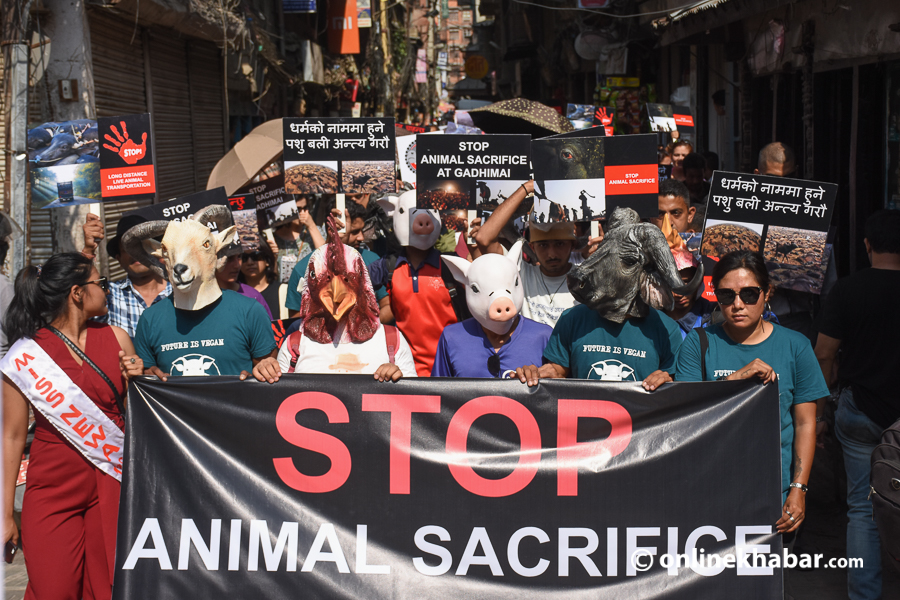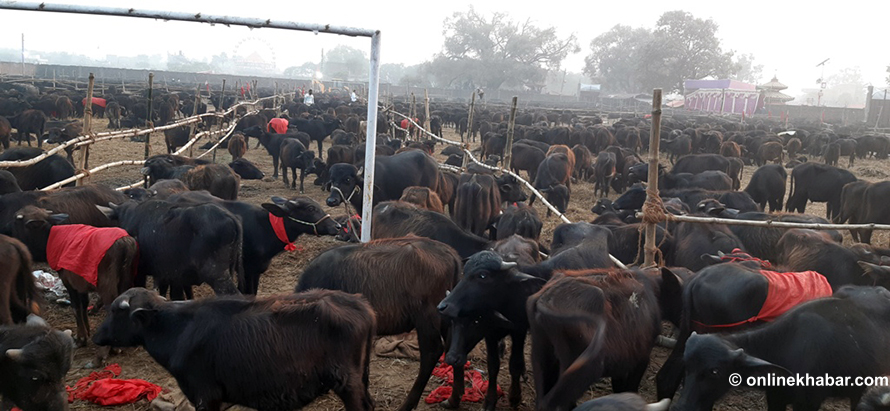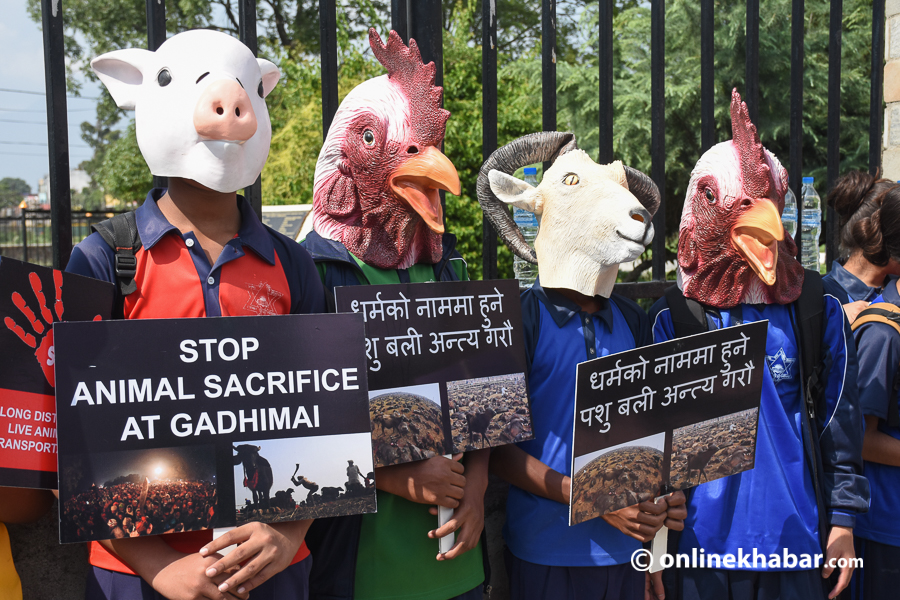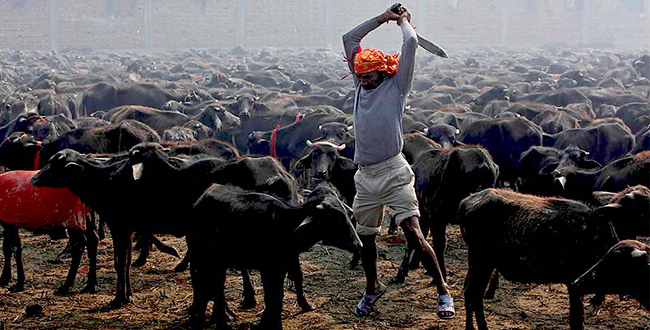“The moral progress and strength of a nation can be judged by the care and compassion it shows towards its animals.”- Mahatma Gandhi
Annually, millions of innocent animals meet their dark destiny for the sake of human superstition in the name of religion, which per se is insane. The tradition reflects the cruel and barbaric practice in the name of religion, in which innocent animals have to sacrifice their lives. The same cruel and barbaric tradition is called animal sacrifice (bali pratha), in which the sacrifice of animals is committed to appease a god or deity.
This inhumane tradition in the name of religion should be terminated as it causes immense pain and suffering to innocent animals. Further, it is also against the spirit of the law of Nepal although concrete legislation is yet to be introduced.
The law on animal sacrifice

Besides being a moral evil, from a legal perspective, this is also against the constitutional mandate and spirit. This practice cannot be protected under Article 26(3) of the constitution that guarantees the right to religion. This article restricts any act which is contrary to public health. Animal sacrifice does affect the mental health of the public, children in particular. Indeed, this tradition has a traumatic effect both on the animal and the viewer as well as against the public interest.
Yet, Nepal lacks comprehensive legislation to curb animal sacrifice. Instead, section 291 of the National Penal (Code) Act, 2017, allows religious animal scarification in the name of tradition.
However, though there is an Animal Welfare Directive, 2016, and many provisions of the Penal Code deal with animal welfare. The government should promulgate separate legislations which must deal with animal sacrifice and curb such barbaric traditions with the exception to allow the killing of animals for food and research.
The history of legislation shows that the traditions which had deep root in society although being against community interest at large, such as the practice of human sacrifice, immolating a widow at the pyre of her deceased husband, the devadasi practice, or of ostracising a person from the community and religious function on account of his having eaten forbidden food or taboo, were eradicated from the society by state intervention via competent legislation as well as judicial intervention.
On various occasions, it was proved that custom or usage, even if proved to have existed in the pre-constitution period, cannot be accepted as a source of law, if such custom violates human rights, human dignity, social equality, and the specific mandate of the constitution and law made by the Parliament.
A morality test

The tradition of animal sacrifice engages an unimaginable amount of cruelty to the sacrificed animal, which is often seen lying around in pain and suffering after receiving blows on its necks. You know people usually cannot kill it at the first ago. It has been also observed that the animal tries to escape in a fatally wounded condition, which per se is very painful and terrific.
Meanwhile, it causes substantial emotional injury in children who witness the act. This barbaric practice violates the nation’s mandates in protecting animals from cruel and unnecessary killing. At most of the places, where animal sacrifice is done, the stakeholders rarely check the sharpness of the slaughter equipment which is many times blunt and it takes several blows to kill the animal which presents a very depressing and traumatising sight. Also, after the sacrifice is completed, the smell and sight of blood around temples reflect a horrific sight.
None of the religions supports animal sacrifice. Rather, the core value of religion is based upon spiritual values, where the religious texts, the Vedas, Upanishads, and Puranas even say “love others, serve others, help ever, hurt never”. Animal sacrifice is not a form of worship, rather it is a reflection of a social evil that is based on superstitions and against the spirit of Hinduism which preaches the spirit of “Ahimsa”. Even, the core value of Hinduism believes that God resides in every living being, which means, god resides in innocent animals as well.
Conclusion

The advocates of animal sacrifice claim that the practice of animal sacrifice is ritual and the practice is a historical association between animal sacrifice and religious worship. It can be accepted that this tradition is a matter of faith, ritualistic worship, and continuation of a tradition which are passing down from generation to generation. But, such barbaric practices and rituals must change in the modern era.
The animals are also living beings and they breathe like us and have basic rights. The rights should be protected and they have the right to live in harmony with human beings and nature. Animals are also a creature of God; no deity would ever ask for the blood of their creation. All the deities are kind-hearted and bless humanity to prosper and live in harmony with each of their creatures. The practise of animal sacrifice is barbaric and dastardly, which is nothing more than a superstition. In the name of rituals and superstitions, religion cannot be allowed to become a tool for perpetuating untold miseries on animals.
The moral development of humanity does constitute the welfare of the animals and birds and they require an appropriate environment, diet, and protection from pain, suffering, injury, and disease. It is a human responsibility to respect the animals and protect them from the danger of unnecessary stress and strains. It is our responsibility to make all our efforts to eradicate the evils in society. The old traditions which are superstitions must give way to new traditions. Nepal’s government must promulgate legislation to curb such barbaric traditions.
























